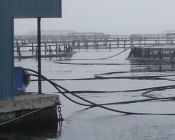
|
a |
|
- |
|
- |
|
- |
| careers |

Hdpe Pipe for Material Handling Systems
Oxford Plastics manufacturers hdpe pipe for material handling systems. We specialize in pneumatic conveying pipe which is used in various industries for displacing particulate material from one location to another. Depending upon the industry, the type of particulate material may include grain, sugar, cement, feed, fertilizer, sand, salt and resins as well as many others. When using a pneumatic conveying line it is desirable to provide an apparatus for dispensing the particulate material from a source into the pneumatic conveying line in an efficient and controllable manner. Our smooth wall pipe is ideally suited for the effective pneumatic conveyance of power and solid materials. If you're in the business of building pneumatic conveying systems, or complete turnkey large bulk material handling plants, and are looking for a reliable source of hdpe plastic pipe, contact us today and we will gladly answer all of your questions.
Applications: you are on the material handling page
|
municipal | industrial | marine & dredging | agriculture | sanitation | mining | electrical | irrigation | communications | residential | landfill | recreation | road & highway construction | geothermal heating | ventilation | hydronic | fireworks | fish farms | floating docks | culvert | pontoons | tile | material handling |
||
Why use HDPE Pipe for Material Handling?
Because polyethylene is smoother than other piping materials, it is well
known for its optimum flow rates which are critical in pneumatic conveying
systems. A typical pneumatic pipe conveyor system transports materials
in suspension by using a high velocity air stream generated by a blower
system. The main uses for this kind of pipe conveyor system is mostly
for the transport of materials such as grain, wood chips, resins,
sugar, cement powder, feed, fertilizer, sand, salt and saw
dust. A typical system used mostly for the transportation of bulk cement
consists of a motorized pump and a source of compressed air for fluidizing
the material. Thanks to the smooth inner surface of our pipe, the pressure
loss in the piping system can be reduced by as much as 25% compared with
metal piping. It can also mean smaller pipes and less powerful pump equipment
lowering both your installation and operating costs. Due to its light
weight, our material handling pipe is easy and less expensive to transport,
to install and to support. Above all else, our pipe guarantees you a long
lasting, maintenance free service.
Main Features of Hdpe Pipe as a Material Handling System
Pipe made from polyethylene is a cost effective and time tested solution
for a broad range of piping problems in the material handling industry.
Time tested and proven effective for above ground, surface, buried, sliplined,
floating, and subsurface material handling applications, the main features
of pipe include the following:
- Reduced Installation Costs
Hdpe pipe is light weight which means lighter equipment will be needed for handling and installation. Produced in straight lengths or coils, hdpe pipe comes in longer lengths and requires fewer fittings which allows for significant savings in labor and equipment. - Durable and Tough - polyethylene pipe and fittings are surprisingly resilient and resistant to damage caused by external loads, vibrations, and from other pressure surges such as water hammer. It also has a high strain allowance which prevents any kind of breakage due to cold weather.
- Easy To Repair
Compared to other pressure pipe materials, hdpe pipe has the lowest repair frequency per mile of pipe per year. - Corrosion, Abrasion and Chemical Resistant. Polyethylene pipe doesn't rust, or corrode. It will out last other more costly piping materials when conveying abrasive materials. It offers better overall resistance to corrosive acids, solvents, fuels, bases and salts and is virtually inert. Best of all, is is not affected by bacteria, fungi or naturally aggressive soils.
- Leak Free. With heat fused joints hdpe pipe allows you to create a homogenous, monolithic material handling system. The fusion joint is stronger than the pipe and will not leak.
- Maintains optimum flow rates. Because polyethylene is smoother than steel, cast iron, ductile iron, or concrete, a smaller pipe can carry an equivalent volumetric flow rate at the same pressure. It has less drag and a lower tendency for turbulence at high flow. Its superior chemical resistance and “nonstick” surface combine to almost eliminate scaling and pitting and preserve the excellent hydraulic characteristics throughout the pipe service life.
- Available in sizes ranging from 3/4" to 18" - our pipe is available in a wide range of diameters and wall thickness, with flanges, elbows, tees, and valves, providing a total system solution.
Material Handling Applications
The use of polyethylene as a pneumatic conveying pipe is well known in
a variety of industries for transporting everything from grain to feed,
fertilizer, sand, cement, salt and even plastic resins. It is also very
popular for pneumatic fish feeding systems for the fish farm industry.
Whether you’re looking for long service, trouble free installation, flexibility,
resistance to chemicals and a myriad of other features, high density polyethylene
pipe should exceed all of your requirements.
Contact us today by email or our toll free number:
sales@oxfordplasticsinc.com
1.800.263.0502
|
Copyright ® 2003 - 2008 | Oxford Plastics Inc. | All Rights Reserved |
|||
|
Oxford Plastics Inc. ~ PO Box 119, Oxford Road 6, Embro, Ontario, CANADA, N0J 1J0 |
|||
|
Office: 519.423.6232 ~ Fax: 519.423.6057 ~ Toll Free: 1.800.263.0502 |